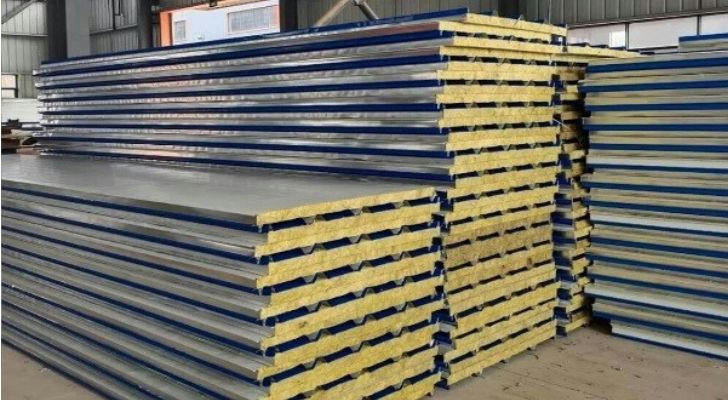Build for Tomorrow: A Clever Guide to Sandwich Panels
Imagine constructing a building that’s not only sturdy but also energy-efficient, stylish, and built in record time. Sandwich panels make that vision real and more affordable than you might think. With smart engineering and competitive materials, you can get premium structural and insulation benefits at just seven to fourteen dollars per square foot.

1. What Is a Sandwich Panel?
Think of a robust, layered “building sandwich.” It features:
Two sturdy metal or composite facings, often steel or aluminum
A thick insulating core—commonly polyurethane (PUR), polyisocyanurate (PIR), expanded polystyrene (EPS), or mineral wool
This clever structure combines strength and insulation in a sleek panel that resists bending and keeps your energy bills low.
2. Why Sandwich Panels Shine
These panels offer serious perks:
Energy Savings on Overdrive
Their thick cores deliver top-tier R-values, significantly reducing heating and cooling costs.
Structural Strength, Light as a Feather
Surprisingly lightweight, these panels support large spans and cut down on structural framing.
Quick-As-Lightning Installation
Factory-made and pre-cut, panels arrive ready to assemble—no waiting, minimal labor. That saves time and demolition dust.
Peace and Quiet
Dense cores dampen sound, ideal for noisy areas like studios or busy warehouses.
Fire-Resistant Options
Choose mineral wool cores for top fire safety, or PIR for budget performance—panels can actually slow flame spread.
Eco-Friendly Feel
Many panels feature recyclable metal skins and foam cores, and reduce waste with precision cutting.
3. How Much Do They Cost?
Let’s cut through the clutter with real-world numbers:
Materials: Typically $7 to $14 per square foot for foam-core panels.
Composite Options: SIPs—a fancy sandwich panel with OSB or metal skins—often run $10 to $18 per square foot in the U.S. .
Premium Panels: Specialty options, like curved insulated panels, may top out at $20 to $30 per square foot.
To be extra wallet-friendly, major suppliers now offer packages starting around $6.50 to $8 per square foot on bulk orders —a deal that blends premium performance with surprising affordability.
4. Price Comparison: Sandwich Panels vs. Traditional Walls
Now, let’s compare this to a conventional build:
Traditional Stick-Built: Wood studs, insulation, cladding, drywall—usually runs $15 to $25 per square foot.
Sandwich Panels: At $7 to $14 per square foot, you’re getting insulation, structure, and finish in one go—cutting both material and labor costs.
SIPs: While slightly higher at $10 to $18, they offer airtight, high-performance building envelopes that lower lifetime energy bills.
The result? Sandwich panel buildings often cost 30 to 40 percent less to operate over their lifespan than stick-built alternatives.
- Choosing the Right Panel for You
Your ideal sandwich panel depends on your project:
Residential Homes: EPS or PIR SIPs hit the sweet spot—solid insulation for under $12 per square foot.
Cold Storage or Industrial: Thicker PIR or mineral wool panels add robust insulation and added fire resistance.
Office or Studio Use: Sound-dampening cores and a polished skin give both style and comfort.
6. Quick Tips for Buying Smart
Evaluate R-Value Needs: Thicker cores insulate better.
Get Factory Cuts: Pre-cut panels save building time and reduce waste.
Factor in Installation: Even though panel install is fast, include about $1–$4 per square foot for labor.
Check Fire Codes: Buildings over certain heights or types may require mineral-wool cores.
7. Final Thoughts: Build Smarter, Save Big
Sandwich panels bring high-tech benefits—energy efficiency, structural integrity, fire safety, and quick assembly—at prices that start under ten dollars per square foot. Compared to traditional walls, you're paying less upfront, building faster, and saving on energy for years to come. Whether you're building a modest home, a cool workspace, or an industrial facility, sandwich panels give you more value for every dollar spent.
Choosing these panels means choosing strength, comfort, and savings wrapped into one sleek, efficient package—your future just built smarter, not harder.
